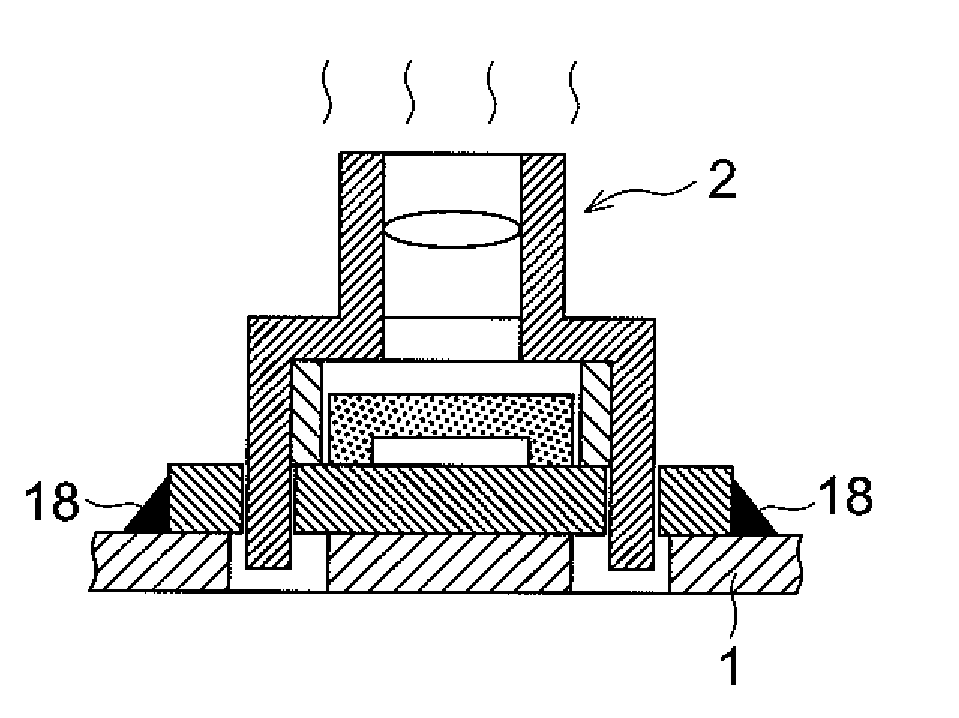Optical Element, and Process for Producing Electronic Equipment using the Optical Element
- Summary
- Abstract
- Description
- Claims
- Application Information
AI Technical Summary
Benefits of technology
Problems solved by technology
Method used
Image
Examples
example 1
Preparation of Inorganic Particles 1
[0138]At first, to 23 g of TM-300 (γ alumina made by Taimei Chemicals Co., Ltd., primary particle diameter of 7 nm) were added 500 g of pure water and 4.8 g of aqueous ammonia solution (28%, made by Kanto Chemical Co., Inc.), and the mixture was stirred. This solution was dispersed with Ultra Apex Mill UAM-015 (Kotobuki Industries Co., Ltd.) using glass beads of 0.05 mm at a circumferential speed of 7 msec for fours hours. During this time, 11.5 g of tetraethoxysilane (LS-2430, made by Shin-Etsu Chemical Co., Ltd.) was dropped to the aforesaid solution over 2 hours.
[0139]From the obtained particle dispersion liquid, a portion of 327 g was taken. After adding 2,280 g of ethanol, 1,050 g of pure water and 20 g of aqueous ammonia solution (28%, made by Kanto Chemical Co., Inc.) to the aforesaid portion to dilute it, 38 g of tetraethoxysilane (LS-2430, made by Shin-Etsu Chemical Co., Ltd.) was dropped over 8 hours. Then, the liquid was agitated at roo...
PUM
| Property | Measurement | Unit |
|---|---|---|
| Surface roughness | aaaaa | aaaaa |
| Surface roughness | aaaaa | aaaaa |
| Surface roughness | aaaaa | aaaaa |
Abstract
Description
Claims
Application Information
 Login to View More
Login to View More - R&D
- Intellectual Property
- Life Sciences
- Materials
- Tech Scout
- Unparalleled Data Quality
- Higher Quality Content
- 60% Fewer Hallucinations
Browse by: Latest US Patents, China's latest patents, Technical Efficacy Thesaurus, Application Domain, Technology Topic, Popular Technical Reports.
© 2025 PatSnap. All rights reserved.Legal|Privacy policy|Modern Slavery Act Transparency Statement|Sitemap|About US| Contact US: help@patsnap.com



